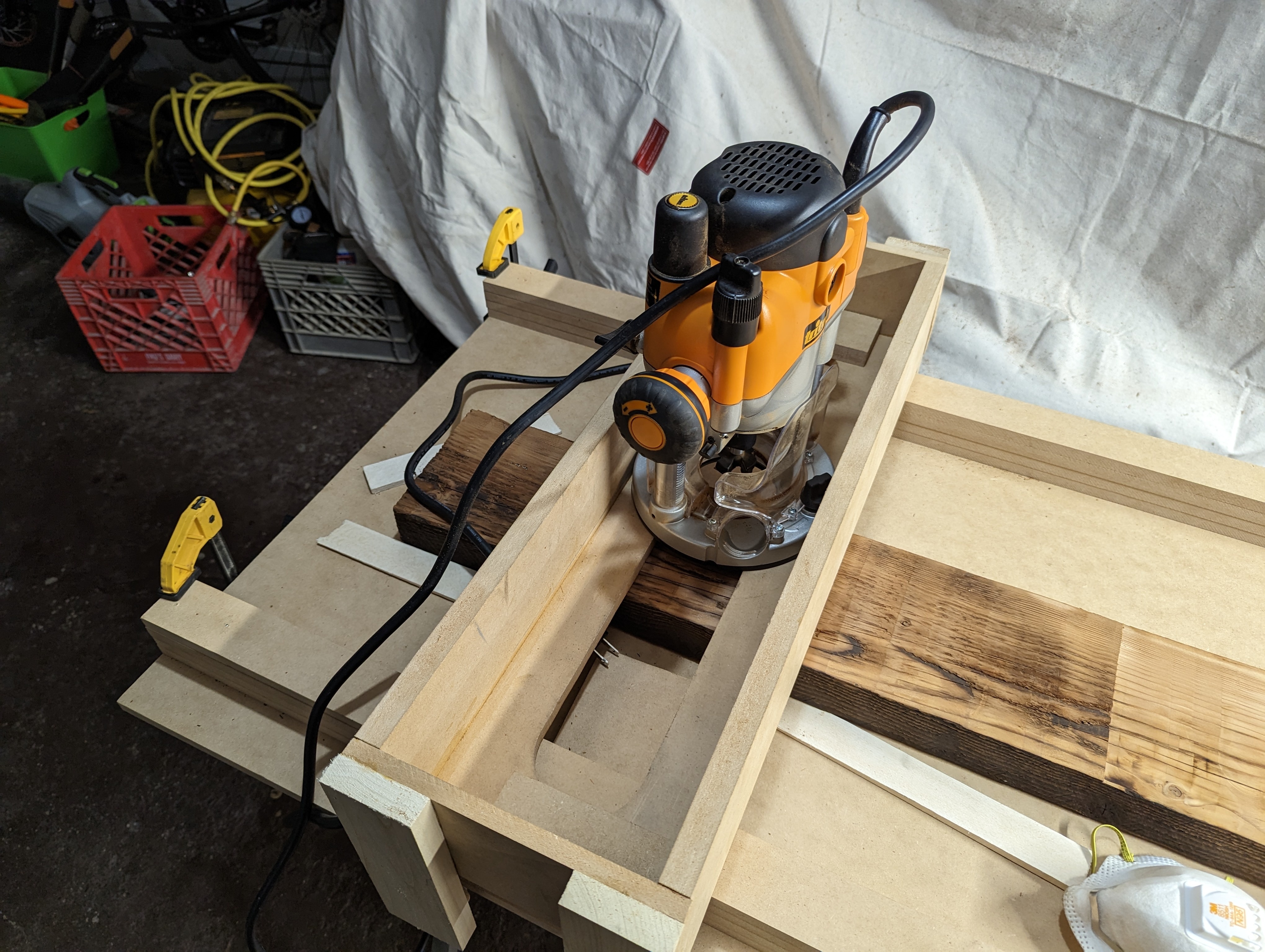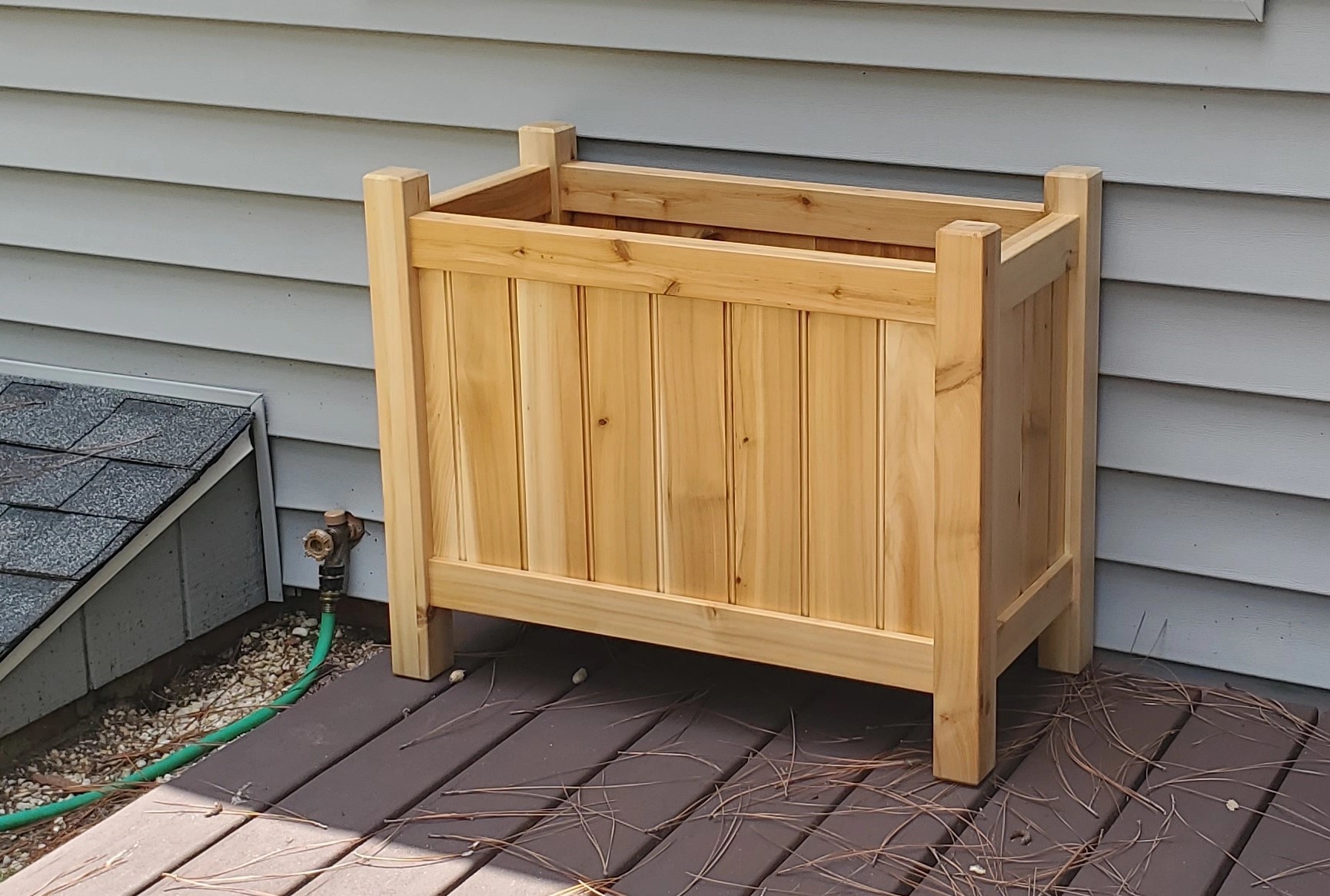Bought this black walnut cookie off of Facebook marketplace for a good price. The only catch is it is warped, cracked, cupped, and twisted. It’s about 4 in thick and that’s plenty of material to make a coffee table, but I need some advice and guidance on making a router planing jig please.
YouTube is definitely your friend here. So many great woodworking channels. There’s a woman who does this kind of project all the time, and unfortunately her channel name escapes me. If I can find it again, I’ll add a comment for you.
I second this. Try searching youtube for “slab flattening jig”.

Here is what I came up with
I am interested in what you come up with for this. I have a router and a large table top I made, that due to my novice woodworking abilities, is not flat.
Maybe this is a dumb question, but why not just use a hand plane?
Tearout would be my biggest concern. Hand planing a board with fairly straight grain? No biggie. Hand planing something like hickory with crazier grain? That can be a pain. I imagine a cross section like this would be difficult to manage.
A hand plane removes the same thickness of wood wherever you run it, so getting something flat (that isn’t already flat) is a challenge.
A router sled/jig (not sure exactly what to call it, I’m not an expert either) acts as a flat reference.
A hand plane is for both thicknessing and straightening a board. A hand plane does not remove the same amount of material unless the board is already flat. The long flat heel of the plane serves as a reference surface. There is some skill required to not taper the workpiece and you can use winding sticks to check your progress as you flatten the workpiece.
A router sled/CNC router will be able to accomplish the same thing.
Ah, good point.
I’m no expert, but I’ve seen better people than me getting boards to nearly flat with only a hand plane.
They’re usually the “back to pre-power-tools woodworking” types.
It could work, but there are still a few considerations. First, even a fairly conservative setting on the router sled will remove material more quickly than all but the most aggressively tuned Jack planes. Second, while there’s no way to make this quick and easy, using a hand plane takes time, muscle, and skill that we don’t all have. Finally, a cookie is going to be 100% end grain, which is particularly hard on hand tools and more likely to tear out.
TIL. Thanks, internet stranger!
I’ve used a hand plane to flatten out a cutting board as a complete amateur. It works surprisingly well but something larger like a tabletop would take a long time
Yeah, I think the biggest thing is that a cutting board will already be “kind of” flat when you start, where this giant cookie looks like it will need a good 1/8" or even 3/16" removed everywhere to level it out if you want to clear most of those grooves and checks. Best solution is probably a router sled followed by a hand plane.
I have used a hand plane to flatten coffee tables in the past, but I don’t think it would work well with the circular grain pattern and it would take me a week. Plus walnut is hard as heck.
This looks to be end grain which takes a toll on a blade edge and would be extremely laborious with a hand plane.
Why does it look like the millennium falcon?
deleted by creator



